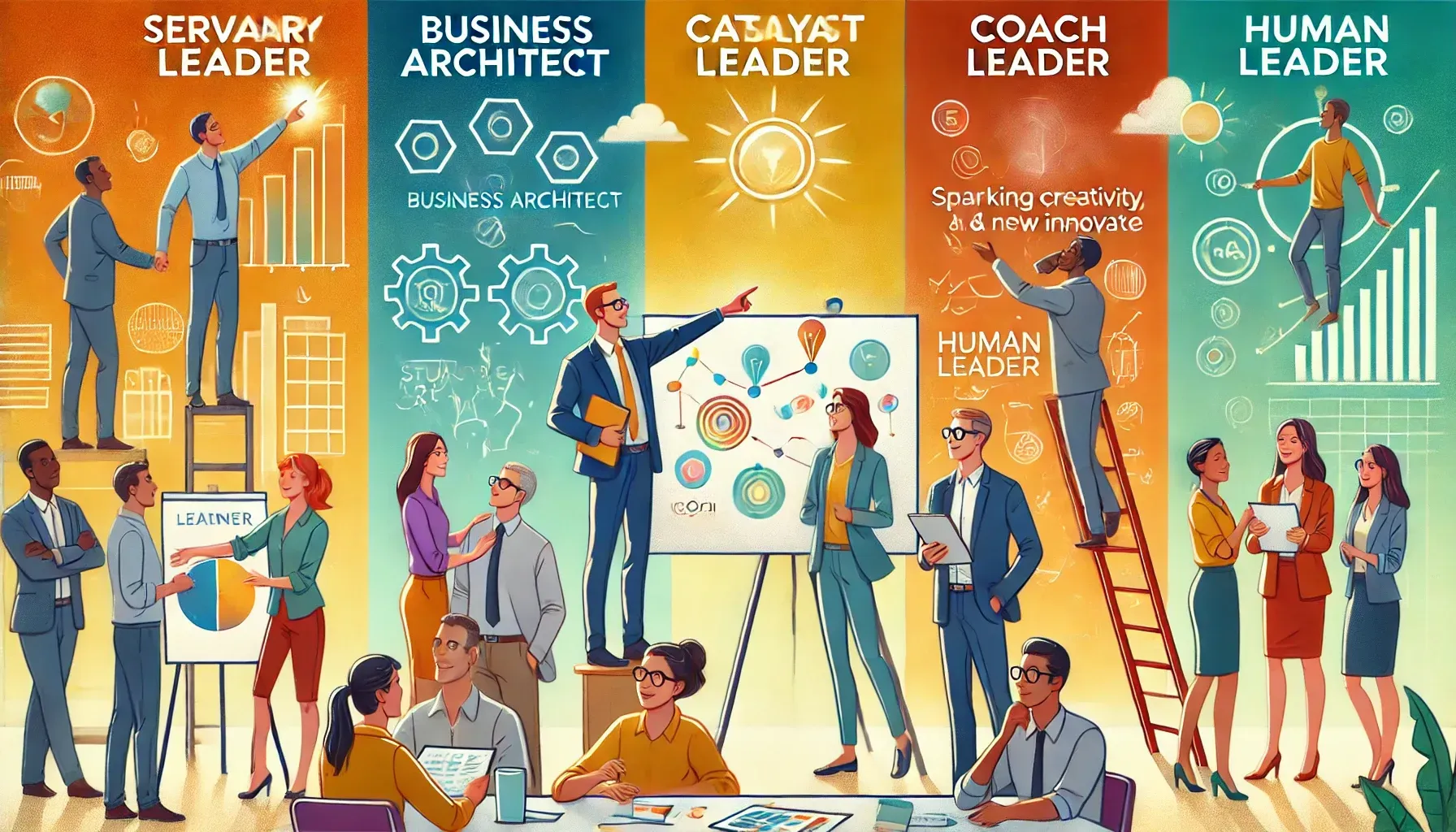Servant Leader Roles
Cathie Leimbach • August 6, 2024

Leaders who serve their organization and its people are breaking away from the mold of the autocratic and controlling boss. They are engaging and empowering others to build trust and enhance both satisfaction and productivity in the workplace.
Let's look at five roles of these servant leaders:
- Visionaries: Servant leaders articulate a clear vision that inspires and aligns the team. By sharing the organization's mission and goals, they provide direction and purpose, motivating employees to work towards a common objective.
- Business Architects: They design and structure the organization to ensure that processes, resources, and systems support the team's efforts. This involves strategic planning and creating an environment where innovation and efficiency thrive.
- Catalysts: Servant leaders act as catalysts for change by encouraging new ideas and fostering a culture of continuous improvement. They empower employees to take initiative and drive positive transformation within the organization.
- Coaches: They invest time in mentoring and developing their team members. By providing guidance, feedback, and opportunities for growth, they help individuals enhance their skills and advance their careers.
- Humans: Above all, servant leaders demonstrate empathy and genuine concern for their employees' well-being. They build strong relationships, showing that they value and care about each person's contributions and overall happiness.
Through these five roles, servant leaders create a thriving, dynamic, and supportive workplace where both organizations and individuals flourish.
In most organizations, the instinct is to add —more goals, more projects, more meetings. But as Juliet Funt, founder of the Juliet Funt Group, teaches in her Strategic Choice process, real leadership strength lies in deciding what to stop doing . Strategic Choice is the intentional narrowing of priorities—cutting away the clutter so teams can focus on what truly drives results. It’s a disciplined act of letting go: saying no to good ideas so there’s room for the great ones. Funt’s approach challenges leaders to pause, think, and create the mental and operational space their people need to perform at their best. By removing unnecessary tasks and misplaced effort, leaders make room for precision, innovation, and real thinking time. This isn’t about doing less—it’s about doing what matters most. When businesses adopt this mindset, they replace overwhelm with clarity and regain control of their time, energy, and outcomes. For small to mid-sized companies, embracing Strategic Choice can transform busyness into focus—and that focus is where sustainable growth begins. Want a quick visual overview? View Strategic Choice: Making Room for What Matters to see how this process helps leaders focus on what truly drives results.

Hey team leaders! Ever wonder why some companies soar while others stumble? Patrick Lencioni's bestseller, The Five Dysfunctions of a Team , nails it: workplace dysfunctions such as no trust, fear of conflict, lack of commitment, avoiding accountability, and ignoring results lead to mediocre performance at best. But here's the good news—smart leadership development changes the game! Start with building trust . Train leaders to open up and be vulnerable. Teams bond, ideas flow, and costly mistakes drop. Next, embrace healthy conflict . Teach team leaders to make it safe for team members to share the pros and cons of current or new ways of doing things. This helps everyone understand different perspectives. Then, drive commitment . Leaders who clarify goals, ask everyone to share their level of buy-in, and address their concerns get everyone bought in. People focus on high value work and get more done. . Hold folks accountable through coaching. Leaders learn to give kind, direct feedback by praising good work and calmly providing more training as needed. Turnover plummets and the quality and quantity of work improves. Finally, focus on results . Be clear on expectations. Keep score by monitoring progress weekly or daily. Acknowledge team wins when the goals are met. Winning sports teams pay attention to these Five Behaviors of a Team. How would a World Series winner have been determined this week without trust among the players and coaches, openness to tough coaching, the whole team working together, players focusing on their specific positions, and getting players around the bases to get the top score? Every workplace can benefit from these team behaviors as well. Lencioni's research proves it: Companies who prepare their leaders to overcome these 5 common workplace dysfunctions, improve the culture and see huge financial gains. Invest in your leaders today. Your bottom line will thank you! Click here to learn more about the painful cost of team dysfunction.
